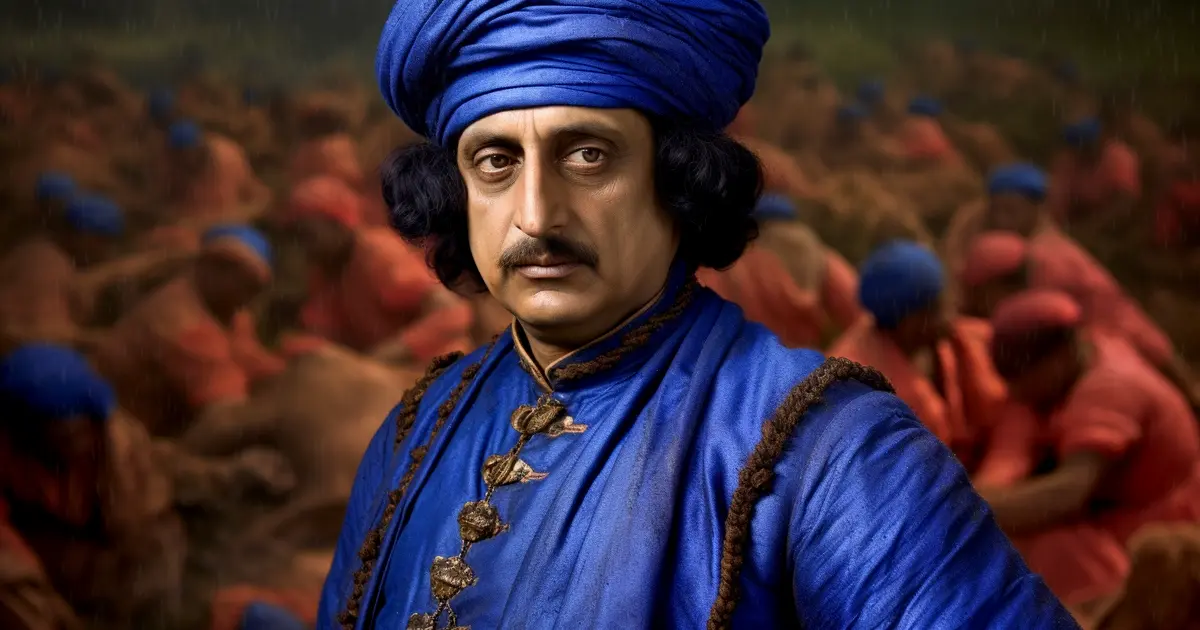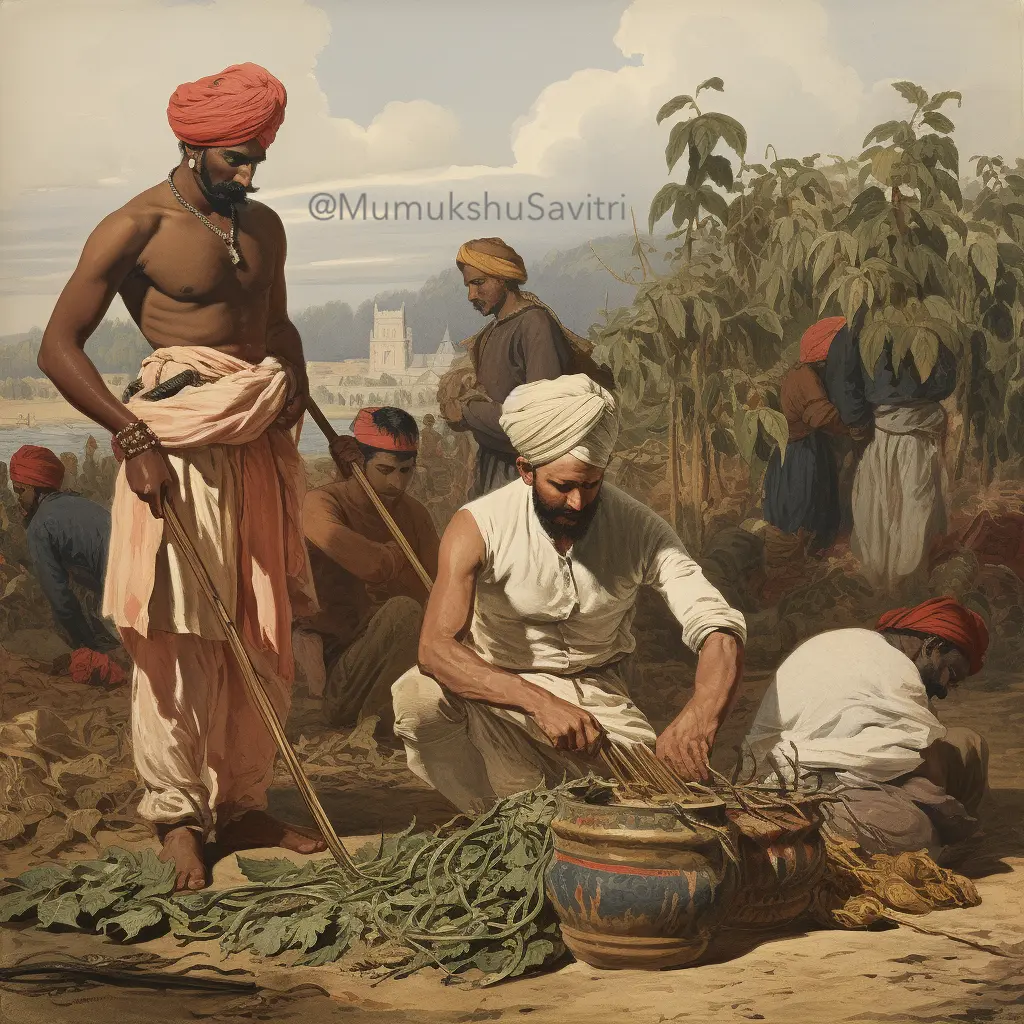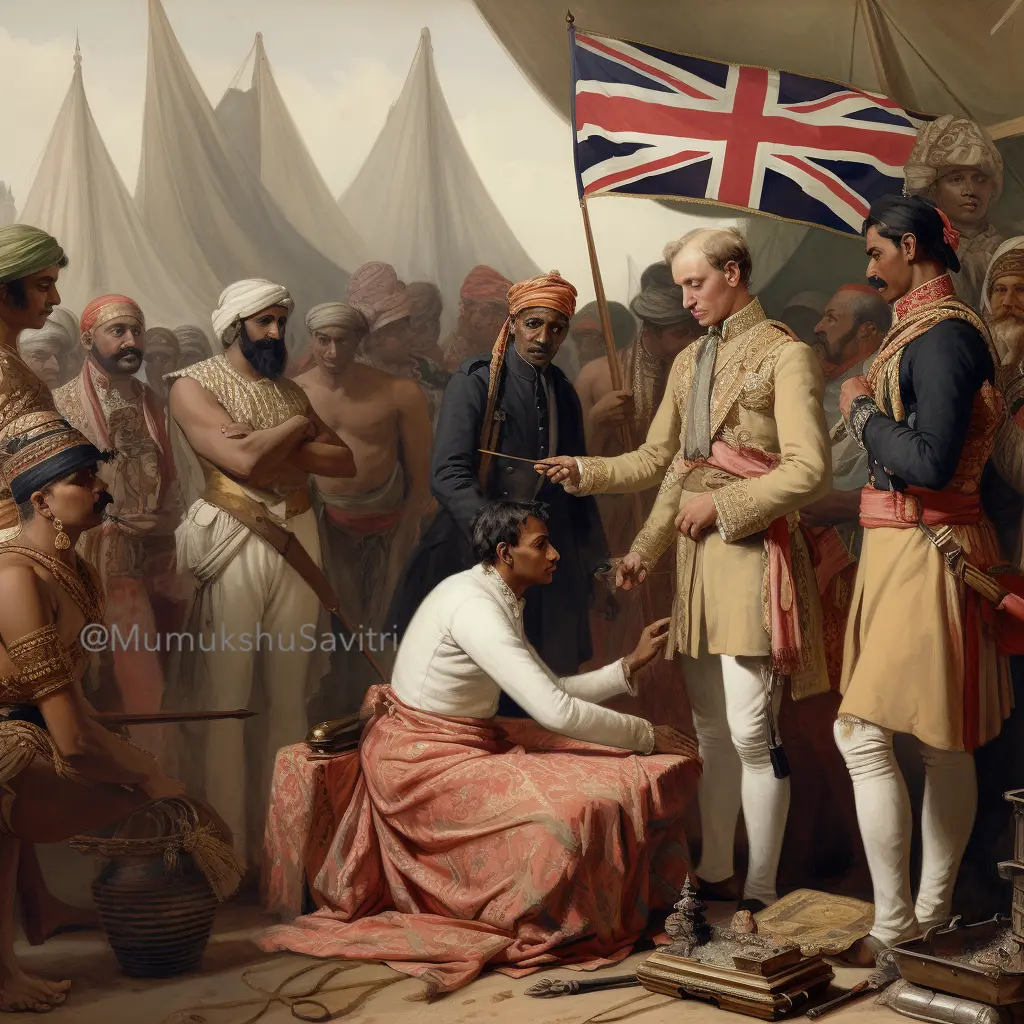
Point of View - Legacy of Raja Rammohun Roy
15 July, 2023
3797 words
share this article
Up to 1813 the British East India Company had maintained its monopoly over trade in the East Indies, as other Europeans were prohibited from settling or trading in India. The Charter Act of 1813 allowed Europeans free resort, but banned them from buying or leasing land in India for settlement. Increasing pressures from missionary groups and other European businesses forced England to review this situation. In 1832, The Select Committee of the House of Commons deliberated over whether all such restrictions should be taken away so that Europeans could settle freely in India. During the Inquiry, one of the most crucial documents that finally swayed Britain to pass the Charter Act of 1833 was the official position of Raja Rammohun Roy called “Remarks on Settlement in India by Europeans” which provided a detailed rationale for why European settlers should be allowed to occupy India completely. So crucial were his remarks that they were printed as part of the General Appendix to the Report from the Select Committee of the House of Commons on the affairs of the East India Company 1832 (Pages 341-342).
The importance of this document cannot be overstated as it represents the last publication of Raja Rammohun Roy before his death. It would not be wrong to call it the last Will and Testament of Raja Rammohun Roy to the People of India. The document summarizes and provides the culmination of Roy’s vision for the future of India. And what a vision it was. It defined Roy’s plan of five defining features that would transform India of the future into:
- A fully Christianized India
- An English speaking India
- A socially anglicized India
- India as an independent extension of Britain
- India as the Christian proselytizer of the rest of Asia
In essence, Raja Rammohun Roy’s final legacy and desire for India was to eradicate Hinduism from India, & turn it into an English speaking, Christian British nation, occupied physically, mentally & spiritually by Europeans. His recommendation was a plea for the removal of all restrictions on buying or leasing India’s lands by Europeans. Essentially, his wish was for India to be colonized entirely in both material and ideological terms. Let’s examine his comments in detail to understand Roy’s motivations and intentions. Roy elaborates nine “advantages” which he said would result from finally allowing all Europeans to settle in and occupy India.
The first advantage he describes is that “European settlers in India will introduce the knowledge they possess of superior modes of cultivating the soil and improving its products (in the article of sugar, for example), as has already happened with respect to indigo, and improvements in the mechanical arts, and in the agricultural and commercial systems generally, by which the natives would of course benefit.”
It is incomprehensible how Roy who was intimately connected with the Indigo trade in Bengal could so conveniently gloss over the horrifying exploitation of Indian slave labor by the East India Company, where indigo enterprises in Bengal had grown from a few companies to around 500 factories in 1830. Before indigo plantations, Indians had the right to choose what to cultivate in their lands. The British policy of forcing peasants to plant cash crops like indigo in fields where food crops like rice grew would have a devastating long term impact on India. Cash crops like indigo could only be grown on fertile land and laborers were forced to work on those fields instead of rice cultivation. The most fertile land which used to nourish the nation was subverted to crops like indigo which depleted the soil at an alarming rate. The eventual result was vast swathes of barren, infertile land which were useless for cultivating essential food crops like rice. This would result in some of the most devastating famines under British rule.

The second advantage Roy lists is that “Free And Extensive Communication with the various classes of the native inhabitants with European settlers would gradually deliver their minds from the superstitions and prejudices, which have subjected the great body of the Indian people to social and domestic inconvenience, and disqualified them from useful exertions” It is disconcerting to note the ease with which Roy uses the disdainful language of missionaries in declaring that the heathen Hindus needed to be delivered from their “superstitions & prejudices” (Hinduism) which disqualified them from doing anything useful. These are the words of a thoroughly colonized mind who perceived nothing valuable in his own dhārmik heritage or the country’s timeless civilization.
The third advantage he elaborates is that as European settlers are more “aware of the rights belonging to the subjects of a liberal Government” and the settlers “would obtain from the local Governments, or from the Legislature in England, the introduction of many necessary improvements in the laws and judicial system ; the benefit of which would of course extend to the inhabitants generally, whose condition would thus be raised.” This is a laughable litany of praises for the brutal colonizers who never had any intentions of delivering justice to the natives of India and ensured that laws were only created and utilized for the sole purpose of mercilessly discriminating against Indians to keep them enslaved. Additionally the British specialized in designing laws and legislature to render Indians powerless and effectively dismantle the fabric of Hindu society in India..
Fourthly, Roy claims, “The presence, countenance and support of the European settlers would not only afford the natives protection against the impositions and oppression of their landlords and other superiors, but also against any abuse of power on the part of those in authority.” In reality, the British ensured that the injustices of the Zamindari system were perpetuated and magnified to control and manipulate agricultural production and labor all over India. They never had any intention nor practiced any semblance of “protecting” the natives from oppression. Instead they built systems to institutionalize such oppression.

Fifthly, Roy describes that European settlers “from motives of European benevolence, public spirit and fellow-feeling towards their native neighbors, would establish schools and other seminaries of education for the cultivation of English language throughout the country, and for the diffusion of a knowledge of European arts and sciences.” In other words, Roy, who saw no value in India’s native knowledge systems, welcomed the prospect of an education system completely appropriated by the English language and European arts and sciences. He was one of the foremost advocates for the dismantling of Indian Knowledge Systems.His previous attempts to ensure that Sanskrit education found no place in India’s future educational system must be viewed in this context. There was no place for the profoundly rich and varied ancient indigenous languages of India. Nor was there any place in Roy’s envisioned future to include the ancient advanced Hindu arts and sciences which had distinguished India as the pinnacle of civilization in centuries past.
Sixthly Roy foresees “intercourse between the settlers and their friends and connection in Europe would greatly multiply the channels of communication with this country, the public and the Government here would become much more correctly informed, and consequently much better qualified to legislate on Indian matters than at present.” Inherent in this claim is the assumption that Indians were unfit and unable to legislate or govern themselves. It is also astonishingly gullible for Roy to imagine that the Europeans would be interested in any transfer of knowledge to empower Indians with the ability to legislate themselves in the future.
Seventhly, Roy elaborates, “In the event of an invasion from any quarter, east or west, Government would be better able to resist it, if, in addition to the native population, it were supported by a large body of European inhabitants” Once again implicit in this claim is the assumption that Indians are a weak race incapable of defending themselves without help from European settlers. More importantly, Roy ignores the fact that far from helping India with her defenses, the British were much more interested in exploiting Indian soldiers as cheap cannon fodder for their profit mongering wars across the globe.
Eighthly, Roy explains, “The same cause would operate to continue the connection between Great Britain and India on a solid and permanent footing; provided only the latter country be governed in a liberal manner, by means of Parliamentary superintendence, and such other legislative checks in this country as may be devised and established. India may thus, for an unlimited period, enjoy union with England, and the advantage of her enlightened Government; and in return contribute to support the greatness of this country.” Clearly Roy saw no viable future for his native country or people if it was removed from holding on to the coattails of Britain.

The ninth advantage listed by Roy is of particular interest, for it is at this point that he declares his true intentions. He says, “If, however, events should occur to effect a separation between the two countries, then still the existence of a large body of respectable settlers (consisting of Europeans and their descendants, professing Christianity, and speaking the English language in common with the bulk of the people, as well as possessed of superior knowledge, scientific, mechanical, and political) would bring that vast Empire in the East to a level with other large Christian countries in Europe”.
This is a breathtaking scenario, as it declares in no uncertain terms that Roy envisions Christian settlers and their physical descendants colonizing and becoming a majority in India, to the point where India would be counted equivalent to the large Christian countries in Europe. He clearly foresees the future of India as a Christian-majority, English-speaking, physically and mentally colonized child-nation of the British.
The second part of his proposed scenario is even more revealing - “By means of its immense riches and extensive population, and by the help which may be reasonably expected from Europe, they (the settlers and their descendants) may succeed sooner or later in enlightening and civilizing the surrounding nations of Asia.” Roy is spelling out that he wants India to transform into the star Christian proselytizer of Asia in the future. This clearly illustrates his perception of Christianity as a supreme enlightening and civilizing force. Such remarks validate the concerns of many Hindu intellectuals that Roy was not just sympathetic to missionary activities in India but personally involved in propagating the missionary agenda. No wonder he sought the wholescale conversion of Hindus to Christianity. This troubling insight forces us to reevaluate Raja Rammohun Roy’s entire role in the “Hindu Renaissance”. It reveals an underlying ulterior motive to demonize Hinduism in order to further the missionary agenda of wholescale conversion of India.
The last section of Roy’s comments describe three disadvantages that may result from the settlement of Europeans in India. First, he observes that European settlers, being rulers of the country, could assume ascendancy over Indians and aim to enjoy exclusive rights and privileges. With this, arises the possibility of Europeans humiliating or hurting the feelings of “aboriginal” Indians, since they are “of different religion, creed, color and habits”. This of course is exactly what happened after the European settlers occupied India, thanks in no small part to Roy’s support.
Laughably, Roy suggests that the possibility of such abuse of power could easily be alleviated by allowing only highly educated, upper class Europeans to settle in India for the first twenty years, as according to him “such persons are very seldom, if ever, found guilty of intruding upon the religions or national prejudices of persons of uncultivated minds.” He also claims that the “enactment of equal laws, placing all classes on the same footing as to civil rights, and the establishment of trial by jury (the jury being composed impartially of both classes), would be felt as a strong- check on any turbulent or overbearing characters amongst Europeans.” Such unshakeable faith in the inherent equitable nature of Europeans is touching but inexplicable. At times, Roy’s comments come across as the outpourings of one completely colonized and detached from his origins or one so dazzled by the superiority of the European race, that he perceives them as angels of deliverance.
The second disadvantage listed by Roy posits the possibility that “Europeans possess an undue advantage over the natives, from having readier access to persons in authority, these being their own countrymen. A large increase of such a privileged population must subject the natives to many sacrifices from this very circumstance.” Once again his remedy for such a situation rests on his unvarnished belief in the benevolent and just nature of Europeans. His recommendation is to appoint European pleaders in addition to Indian lawyers so that they have the “same access to the judge, and are in all respects on an equal footing in pleading or defending the cause of their clients.” Yet again the lofty assumption that Europeans would equitably plead the cases for native Indians against their own kind, is fallacious at best and duplicitous by design at worst.
Finally, we come to the denouement of the entire vision document where Roy’s internal motivations lead him to frightening conclusions. He postulates that since Indians have been exposed primarily to Europeans in positions of authority such as public officers or military troops, they entertain a notion of European superiority, and submit easily. However if Indians come in contact with European settlers of all ranks and classes, they may no longer fear them. Subsequently “natives who come in contact with them will materially alter the estimate now formed of the European character, and frequent collisions of interests and conflicting prejudices may gradually lead to a struggle between the foreign and native race till either one or the other obtain a complete ascendancy, and render the situation of their opponents so uncomfortable that no government could mediate between them with effect, or ensure the public peace and tranquility of the country.” In other words Roy clearly mirrors the fears of the British that there may be a potential conflict with Indians in the future. It is fascinating to observe that Roy analyzes this prospect NOT from the perspective of a native but from the European’s point of view. This is an illuminating testimony to how mental colonization can distort an individual’s entire worldview to the extent that he no longer identifies with his own race. It also indicates Roy is aware of the simmering undercurrent of friction between the British rulers and his countrymen and foresees the potential for rebellion. Therefore he turns his focus to how such future troubles may be prevented by analyzing which regions may be most problematic and suggests strategies to counter them.
Roy proceeds by observing that “Bengalese - whose submissive disposition and want of energy are notorious” would not create such problems. But he cautions that the natives of the Upper Provinces (Punjab, etc.), have a different temperament and “Among this spirited race the jarrings alluded to must be expected”. He cautions that if these natives are subjected to insult and intrusion, it may lead to a situation where the state of things “would ultimately weaken, if not entirely undermine, the power in India, or at least occasion much bloodshed from time to time to keep the natives in subordination.” Specifically, Roy is apprehending which Indian provinces could create trouble in the future and oppose full colonization by European settlers. He provides a risk mitigation strategy by reiterating his previous remedy that initially restricting European settlers to the “respectable intelligent class” will neutralize this threat as they will “emancipate their native neighbors from the long standing bondage of ignorance and superstition, and hereby secure their affection”. He believes that this would help them to form an attachment to the British government “under which they may enjoy the liberty and privileges so dear to persons of enlightened minds.” One must marvel at how desperately Roy wanted British rule to become a permanent fixture of India’s destiny. Not only does he identify the potential problem spots, given his shrewd inside knowledge of Indian nature, he also tries to provide the British with prescient ways to alleviate any chance of future revolt. Roy’s propensity to deride Indian civilization and his fawning, obsequious belief in the superiority of European culture is a constant, recurring pattern throughout the document.
Next Roy apprehends that if “the population of India were raised to wealth, intelligence, and public spirit, by the accession and by the example of numerous respectable European settlers, the mixed community so formed would revolt (as the United States of America formerly did) against the power of Great Britain, and would ultimately establish independence.” He emphasizes that Americans were driven to rebellion by misgovernment. He suggests however, that if Indians are treated liberally, and governed in an enlightened manner, there would be no reason for Indians to feel any disposition to “cut off their connection with England, which may be preserved with so much mutual benefit to both countries.” He is reiterating that even after Europeans elevate Indians, the race is not capable enough to handle wealth and prosperity gracefully. The possibility of rebellion can be prevented judiciously if the enlightened British lords treat their subjects liberally. Roy is not even willing to consider the remote chance that Indians may seek the freedom of self-rule in the future. In his mind, India’s willing transformation into an extension of British civilization is already a foregone conclusion.
Now we come to the most crucial and momentous highlight of Roy’s comments. He elaborates “Yet, as before observed, if events should occur to effect a separation, (which may arise from many accidental causes, about which it is vain to speculate or make predictions), still a friendly and highly advantageous commercial intercourse may be kept up between two free and Christian countries, united as they will then be by resemblance of language, religion, and manners.”
The prospect outlined in this final paragraph is mind-boggling. The so-called “Father of the Hindu Renaissance” is directly expressing his heartfelt desire and vision for the eventual condition of India. He wants all of India to be converted to Christianity!
That way, eventually even if India & Britain were ever to separate due to circumstances, they would still be bound by the close ties of a common culture and religion. Notice that nowhere in his document does Raja Rammohun Roy even mention the role, transformation or reformation of Hinduism anywhere. Instead, he makes it abundantly clear that just like the missionaries, his intention is to see Hinduism wiped out from India. He anticipates all Indians to convert to Christianity in this grand scheme of things to come. Moreover, he anticipates it will be a completely Anglicised India, with the language, religion and manners of the English race. Only then would India be able to slip easily into his cherished ambition of fulfilling her destiny as the “Enlightener of Asia”, advancing the ultimate goal of Christian missionaries in converting the rest of Asia to the Christian fold.

It is imperative that today’s Indic historians and thinkers thoroughly reevaluate the real legacy of Raja Rammohun Roy and examine his true intentions by studying this document. It can justifiably be called the culmination of all his desires for the future of India. His single minded purpose was to eventually eradicate Hinduism from India, and convert it completely and irrefutably into an English speaking, CHRISTIAN nation, occupied physically, mentally & spiritually by the Europeans.
To conclude, Roy insisted that European settlers be sent right away, first experimentally up to the point when it became “safe & expedient to throw the country open” to anyone from Europe. The implications of his ideas were immensely destructive to India’s indigenous Hindu culture. No wonder the British breathlessly celebrated Roy as India’s “greatest reformer”. Roy’s document was so crucial that it resulted in the passing of Britain’s Charter Act of 1833 which took away all former restrictions & permitted all Europeans to have access to settle permanently in India. Roy’s complicity in enabling the Charter Act of 1833 is simply inexcusable, as it crippled India’s socio-economic conditions for centuries to come, and left the nation with the effects of devastating poverty which India is dealing with even today.
Any rational analysis would force us to ask the crucial question: Can a person with such motives, ideas, and goals legitimately be considered a Hindu reformer, especially given that his entire objective was to erase Hinduism and replace all traces of India’s timeless culture with an extension of Christian Britain? The creation of Brahmo Samaj by Roy had been a step to bring Hindus closer to the ultimate goal of Christianization of all of India. If Roy had succeeded in his plans, we would not be Bharat today, but fully assimilated British slaves by mind, body, soul & genetics. Given such a context, it is time to scrutinize each one of his so-called reforms with a critical lens & uncover his true intentions. Viewed through an objective lens, his loud opposition against Sati and other Hindu traditions must also be critically reexamined, to uncover whether the reforms that he engineered were part of an elaborate strategic mission to Christianize India. The collusion of interests with European missionaries explains why he demonized Hinduism & promoted all initiatives for Hindus to be converted.
In particular, Roy’s plea to allow European settlers was for the primary benefit of European missionaries, who had long bristled at Britain’s policy of prohibiting them from settling in India to carry on their missionary activities. Thanks to Roy, all of that would change and the vicious onslaught of social engineering projects to establish false paradigms of caste by the British would succeed. These would all result in long lasting impacts which jeopardize Bharat’s integrity even today. As I will demonstrate in future articles, there was also another nefarious motive of greed and business interests which directed Roy’s ultimate agenda. In light of this irrefutable evidence of his real motives, the implications of Roy’s actions must be analyzed thoroughly to determine his destructive impact on India’s material conditions and Hinduism’s future.
All content and images are copyright of @MumukshuSavitri
References:
Roy, Rammohun. The English Works of Raja Ram Mohun Roy. Vol. 2. Bhowanipore, Oriental Press, 1887.
Carpenter, Mary, ed. The Last Days in England of the Rajah Rammohun Roy. Trübner & Company, 1866.
Collet, Sophia Dobson. The life and letters of Raja Rammohun Roy. 1914.